Investor's Corner
Wall Street explains why they are bullish on Musk-Trump alliance
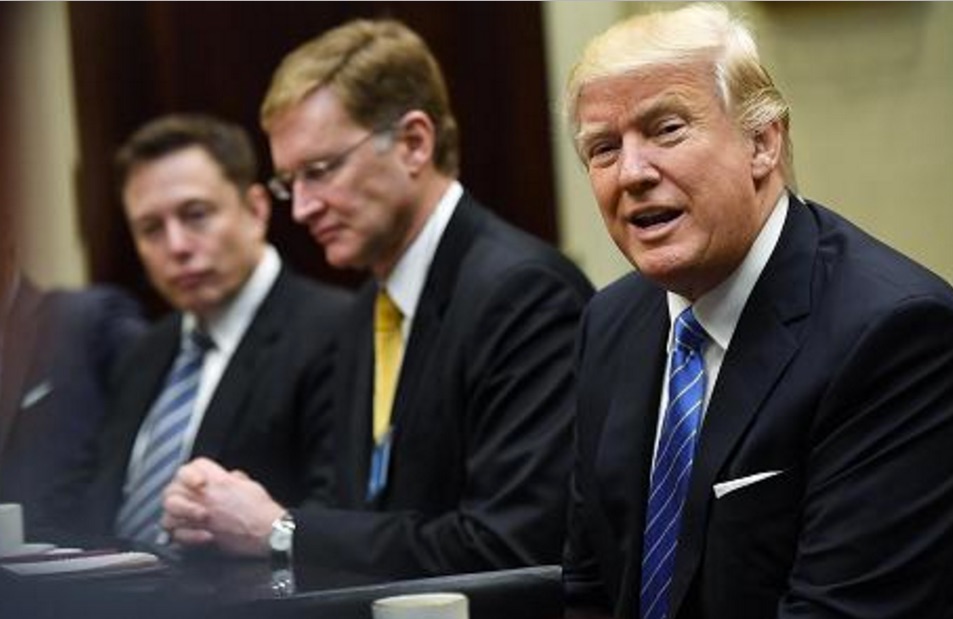
Morgan Stanley analyst Adam Jonas released a new research note clarifying why he raised the target price for Tesla Motors (TSLA) to $305 per share. Jonas warns investors who have equated Elon Musk’s new relationship with Donald Trump with a higher stock price. “There is no way to quantify the value (if any) of Tesla management’s advisory relationship with the new administration,” Jonas said.
Instead, Jonas emphasized the congruence between Trump’s desire for American workers to build products in American factories and Tesla’s business model which does both. Tesla is a leader in the automotive segment in both categories. “When you look at the businesses Tesla is in, you see many areas of overlapping interest” with the Trump administration, Adam Jonas told New York Times correspondent James Stewart on Friday. “To the extent the new administration prioritizes the creation of valuable, innovative high tech and manufacturing jobs, Tesla stands at the epicenter of that.”
In fact, the auto industry manufactures relatively few cars that can be truly called “US Made.” According to a chart compiled by Cars.com last year, the number of models of light duty vehicles that qualify for that label has fallen precipitously in recent years from nearly 30 in 2010 to only 8 in 2016.
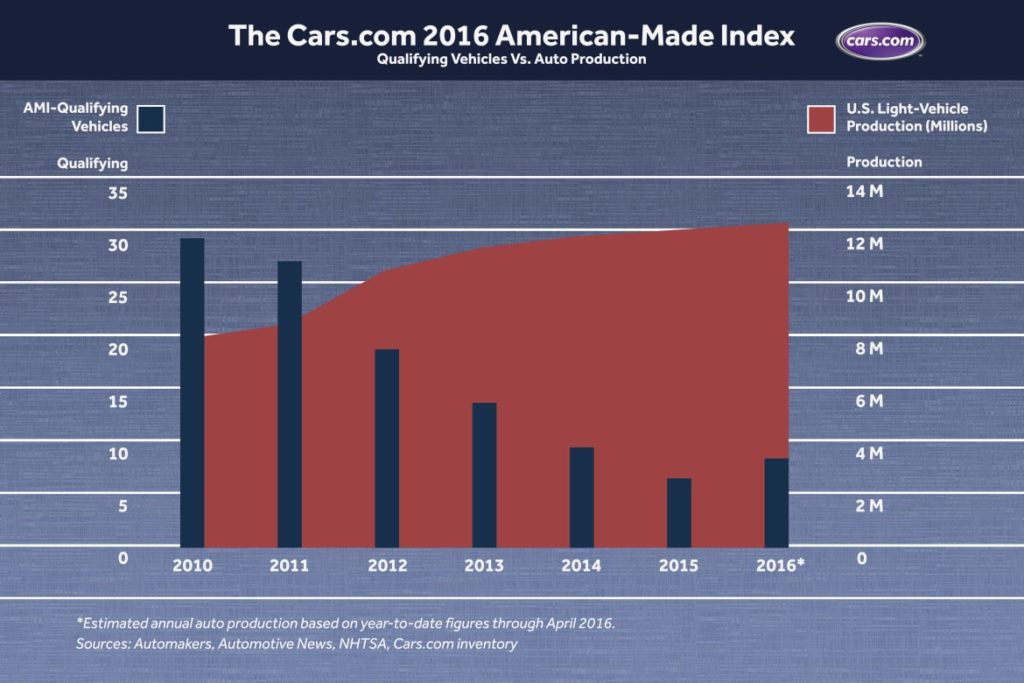
Another analyst weighing on the Musk-Trump connection is Andrew Hughes, an alternative energy analyst for Credit Suisse. Hughes said solar investors “aren’t nearly as negative as they were the day after the election.” In part, that is because solar power — which up until now has needed significant federal incentives to survive — has become so inexpensive, particularly with regard to coal, that many industry observers think it will survive on its own even if those incentives are eliminated by the Trump administration.
Despite Donald Trump’s antipathy to renewable energy, business is all about the bottom line. If solar costs less than coal, then business is going to switch to solar no matter what the president has to say. Elon Musk is also heavily involved in re-imagining the role of the electrical grid. He sees battery storage as the key to making the grid compatible with renewables like solar and wind.
Musk has gone head-to-head with utility companies, including NV Energy, which is owned by Warren Buffett’s Berkshire Hathaway company. In 2016, Musk and SolarCity lost a round when the Nevada PUC enacted new rules imposing monthly assessments on people with rooftop solar systems. In return, SolarCity terminated its operations in the state, laying off hundreds of local workers.
Nevertheless, Musk expects both Tesla with its grid scale batteries and SolarCity with its rooftop systems — including the revolutionary Solar Roof — to play an ongoing part in how people get their electricity in the future. Last fall, just prior to unveiling the Solar Roof, Musk said, “The solution is both local power generation and utility power generation — it’s not one or the other”. He went on to suggest that the proper mix would be about one third residential rooftop power and two thirds power from traditional utility companies.
The US Energy Department stated in its annual energy and jobs report issues earlier this month that “solar technologies, both photovoltaic and concentrated, employ almost 374,000 workers, or 43 percent of the electric power generation work force.” Compare that to the number of workers employed to make electricity from coal. That number is just 86,000 workers. “The jobs data is a compelling argument in favor of the tax credits,” Andrew Hughes said. “I want to believe that Trump won’t kill solar, but there’s still a lot of uncertainty. The big question: Will he take away the tax credits?”
Musk received plenty of blowback when he decided to endorse former CEO of ExxonMobil Rex Tillerson for the position of Secretary of State. That makes him the public face of the fossil fuel industries and theoretically a natural adversary for Musk and his commitment to zero emissions energy. But Elon thinks Tillerson can temper some of the president’s more outrageous plans to extract every last molecule of fossil fuel that can be found on the planet.
Tillerson also advocates for a carbon tax, an idea that Musk strongly supports. According to reports, Musk floated the carbon tax idea at last week’s meeting of business advisors to the president. While Donald Trump did not dismiss the idea out of hand, Musk found little to no support from others in the room.
Trump likes to think big and take bold actions. So does Elon Musk. In some ways, it’s easy to see why the two men might take a liking to each other. Trump is especially interested in space exploration, something that fits perfectly with Musk’s passion for establishing a human colony on Mars.
Job creation in America for American workers, rebooting the traditional utility grid to use modern technology, sending people off to live on other planets. These are all things that interest both men. But cozying up to Trump also exposes Musk to dissatisfaction with some of the president’s less popular plans, like building walls with neighboring countries, sending federal troops into American cities, and banning immigration by people who espouse certain religions. To be successful, Tesla will need a broad base of customers. Musk has been careful to avoid political involvement so far. His association with the new president exposes him to new dangers.
One gets the sense that Musk is willing to accept some of the negatives if he can make progress on his passion for a carbon tax. But if that idea is stymied by Trump and his advisors, Elon’s desire to work with the new administration may cool considerably. Perhaps the most danger comes from the unpredictability and volatility of the new president, who can change course in a heartbeat. Musk will be need to be nimble to avoid getting rolled over by Trump in the future.
The president is scheduled to meet with his council of business leaders today, at which time he says he will provide details about his plant to cut government regulation of business by “75% or more.” That will give Musk yet another chance to evaluate the business acumen of Donald Trump and decide whether his involvement with his plans will pay dividends for him and the companies he leads. As Adam Jonas said in his report, it is impossible to predict how the association between Trump and Musk will benefit either.

Investor's Corner
Tesla bear gets blunt with beliefs over company valuation
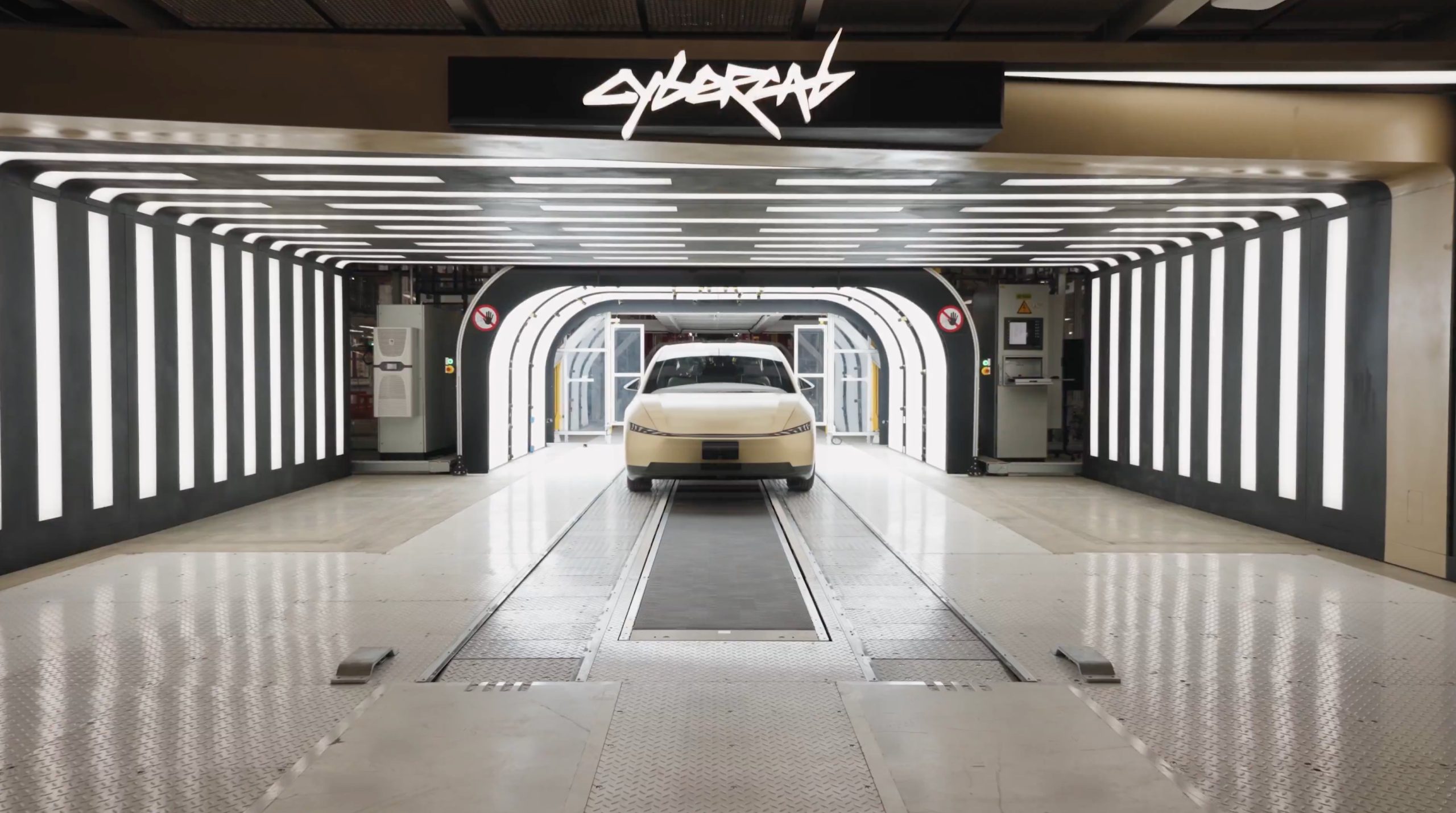
Tesla bear Michael Burry got blunt with his beliefs over the company’s valuation, which he called “ridiculously overvalued” in a newsletter to subscribers this past weekend.
“Tesla’s market capitalization is ridiculously overvalued today and has been for a good long time,” Burry, who was the inspiration for the movie The Big Short, and was portrayed by Christian Bale.
Burry went on to say, “As an aside, the Elon cult was all-in on electric cars until competition showed up, then all-in on autonomous driving until competition showed up, and now is all-in on robots — until competition shows up.”
Tesla bear Michael Burry ditches bet against $TSLA, says ‘media inflated’ the situation
For a long time, Burry has been skeptical of Tesla, its stock, and its CEO, Elon Musk, even placing a $530 million bet against shares several years ago. Eventually, Burry’s short position extended to other supporters of the company, including ARK Invest.
Tesla has long drawn skepticism from investors and more traditional analysts, who believe its valuation is overblown. However, the company is not traded as a traditional stock, something that other Wall Street firms have recognized.
While many believe the company has some serious pull as an automaker, an identity that helped it reach the valuation it has, Tesla has more than transformed into a robotics, AI, and self-driving play, pulling itself into the realm of some of the most recognizable stocks in tech.
Burry’s Scion Asset Management has put its money where its mouth is against Tesla stock on several occasions, but the firm has not yielded positive results, as shares have increased in value since 2020 by over 115 percent. The firm closed in May.
In 2020, it launched its short position, but by October 2021, it had ditched that position.
Tesla has had a tumultuous year on Wall Street, dipping significantly to around the $220 mark at one point. However, it rebounded significantly in September, climbing back up to the $400 region, as it currently trades at around $430.
It closed at $430.14 on Monday.
Investor's Corner
Mizuho keeps Tesla (TSLA) “Outperform” rating but lowers price target
As per the Mizuho analyst, upcoming changes to EV incentives in the U.S. and China could affect Tesla’s unit growth more than previously expected.
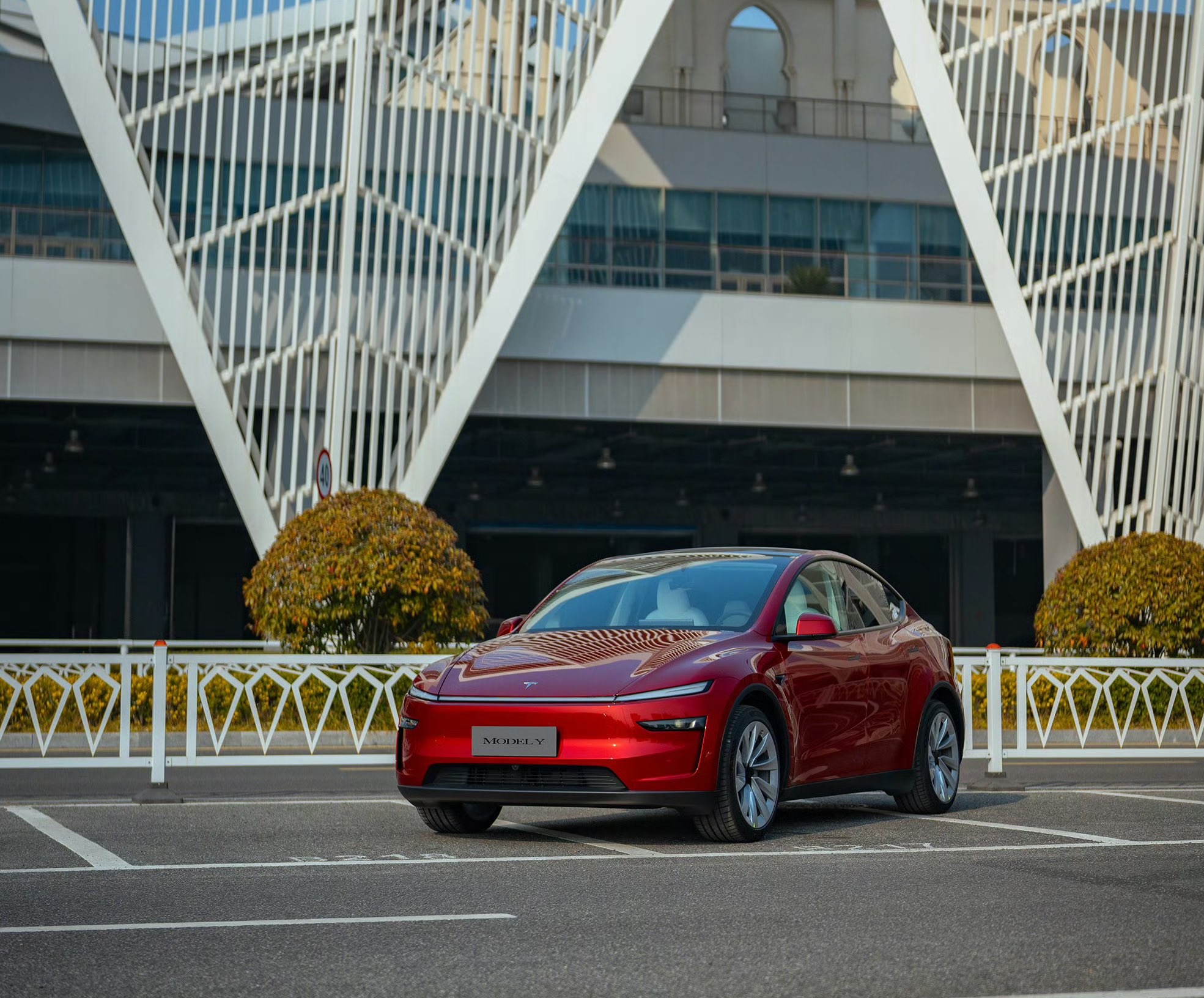
Mizuho analyst Vijay Rakesh lowered Tesla’s (NASDAQ:TSLA) price target to $475 from $485, citing potential 2026 EV subsidy cuts in the U.S. and China that could pressure deliveries. The firm maintained its Outperform rating for the electric vehicle maker, however.
As per the Mizuho analyst, upcoming changes to EV incentives in the U.S. and China could affect Tesla’s unit growth more than previously expected. The U.S. accounted for roughly 37% of Tesla’s third-quarter 2025 sales, while China represented about 34%, making both markets highly sensitive to policy shifts. Potential 50% cuts to Chinese subsidies and reduced U.S. incentives affected the firm’s outlook.
With those pressures factored in, the firm now expects Tesla to deliver 1.75 million vehicles in 2026 and 2 million in 2027, slightly below consensus estimates of 1.82 million and 2.15 million, respectively. The analyst was cautiously optimistic, as near-term pressure from subsidies is there, but the company’s long-term tech roadmap remains very compelling.
Despite the revised target, Mizuho remained optimistic on Tesla’s long-term technology roadmap. The firm highlighted three major growth drivers into 2027: the broader adoption of Full Self-Driving V14, the expansion of Tesla’s Robotaxi service, and the commercialization of Optimus, the company’s humanoid robot.
“We are lowering TSLA Ests/PT to $475 with Potential BEV headwinds in 2026E. We believe into 2026E, US (~37% of TSLA 3Q25 sales) EV subsidy cuts and China (34% of TSLA 3Q25 sales) potential 50% EV subsidy cuts could be a headwind to EV deliveries.
“We are now estimating TSLA deliveries for 2026/27E at 1.75M/2.00M (slightly below cons. 1.82M/2.15M). We see some LT drivers with FSD v14 adoption for autonomous, robotaxi launches, and humanoid robots into 2027 driving strength,” the analyst noted.
Investor's Corner
Tesla stock lands elusive ‘must own’ status from Wall Street firm
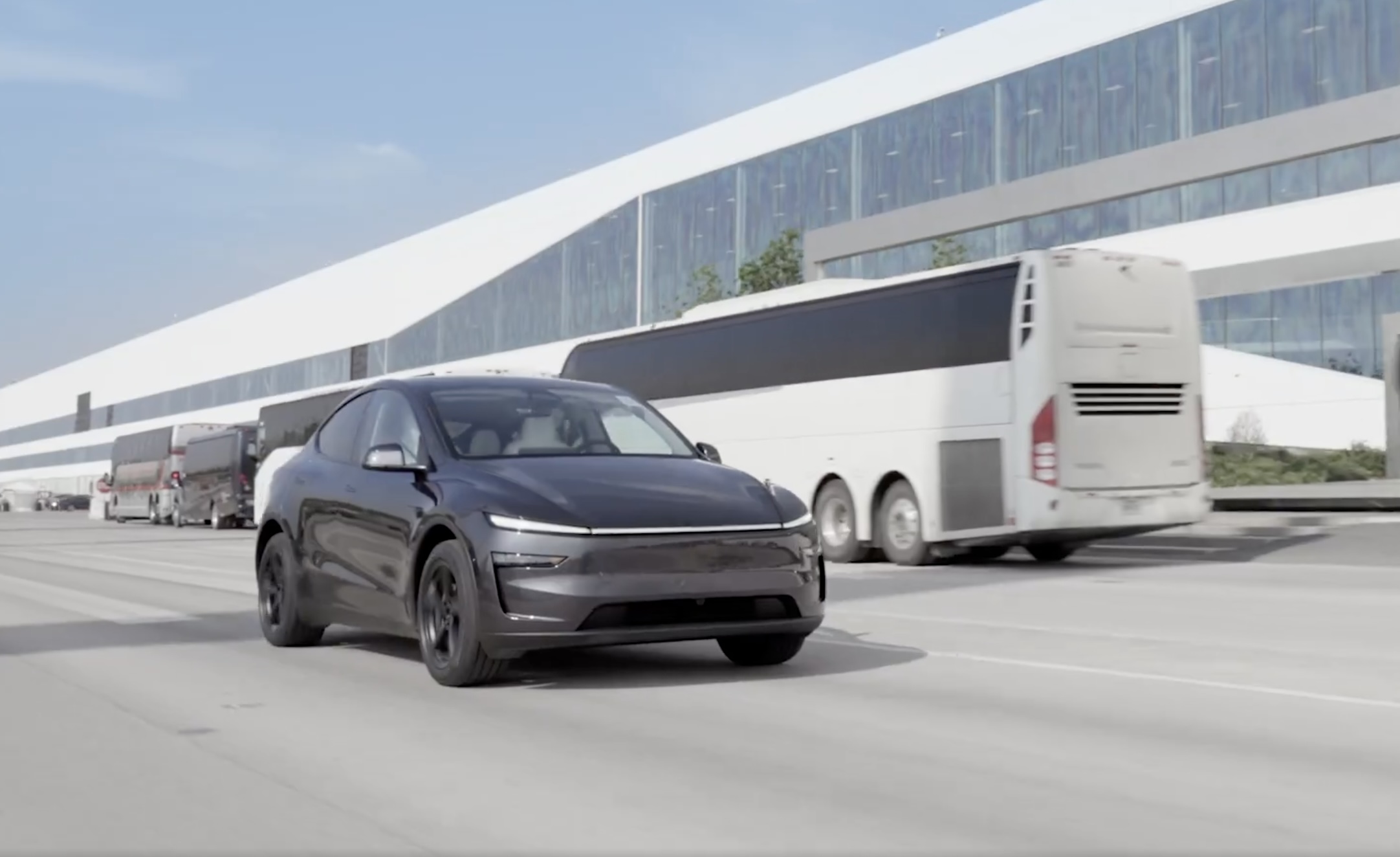
Tesla stock (NASDAQ: TSLA) has landed an elusive “must own” status from Wall Street firm Melius, according to a new note released early this week.
Analyst Rob Wertheimer said Tesla will lead the charge in world-changing tech, given the company’s focus on self-driving, autonomy, and Robotaxi. In a note to investors, Wertheimer said “the world is about to change, dramatically,” because of the advent of self-driving cars.
He looks at the industry and sees many potential players, but the firm says there will only be one true winner:
“Our point is not that Tesla is at risk, it’s that everybody else is.”
The major argument is that autonomy is nearing a tipping point where years of chipping away at the software and data needed to develop a sound, safe, and effective form of autonomous driving technology turn into an avalanche of progress.
Wertheimer believes autonomy is a $7 trillion sector,” and in the coming years, investors will see “hundreds of billions in value shift to Tesla.”
A lot of the major growth has to do with the all-too-common “butts in seats” strategy, as Wertheimer believes that only a fraction of people in the United States have ridden in a self-driving car. In Tesla’s regard, only “tens of thousands” have tried Tesla’s latest Full Self-Driving (Supervised) version, which is v14.
Tesla Full Self-Driving v14.2 – Full Review, the Good and the Bad
When it reaches a widespread rollout and more people are able to experience Tesla Full Self-Driving v14, he believes “it will shock most people.”
Citing things like Tesla’s massive data pool from its vehicles, as well as its shift to end-to-end neural nets in 2021 and 2022, as well as the upcoming AI5 chip, which will be put into a handful of vehicles next year, but will reach a wider rollout in 2027, Melius believes many investors are not aware of the pace of advancement in self-driving.
Tesla’s lead in its self-driving efforts is expanding, Wertheimer says. The company is making strategic choices on everything from hardware to software, manufacturing, and overall vehicle design. He says Tesla has left legacy automakers struggling to keep pace as they still rely on outdated architectures and fragmented supplier systems.
Tesla shares are up over 6 percent at 10:40 a.m. on the East Coast, trading at around $416.








